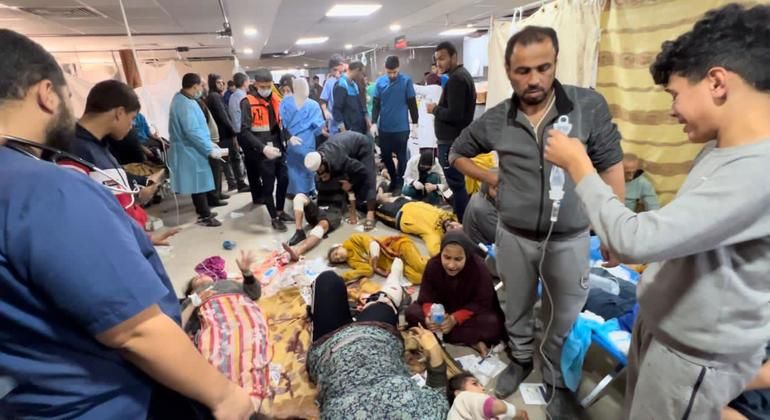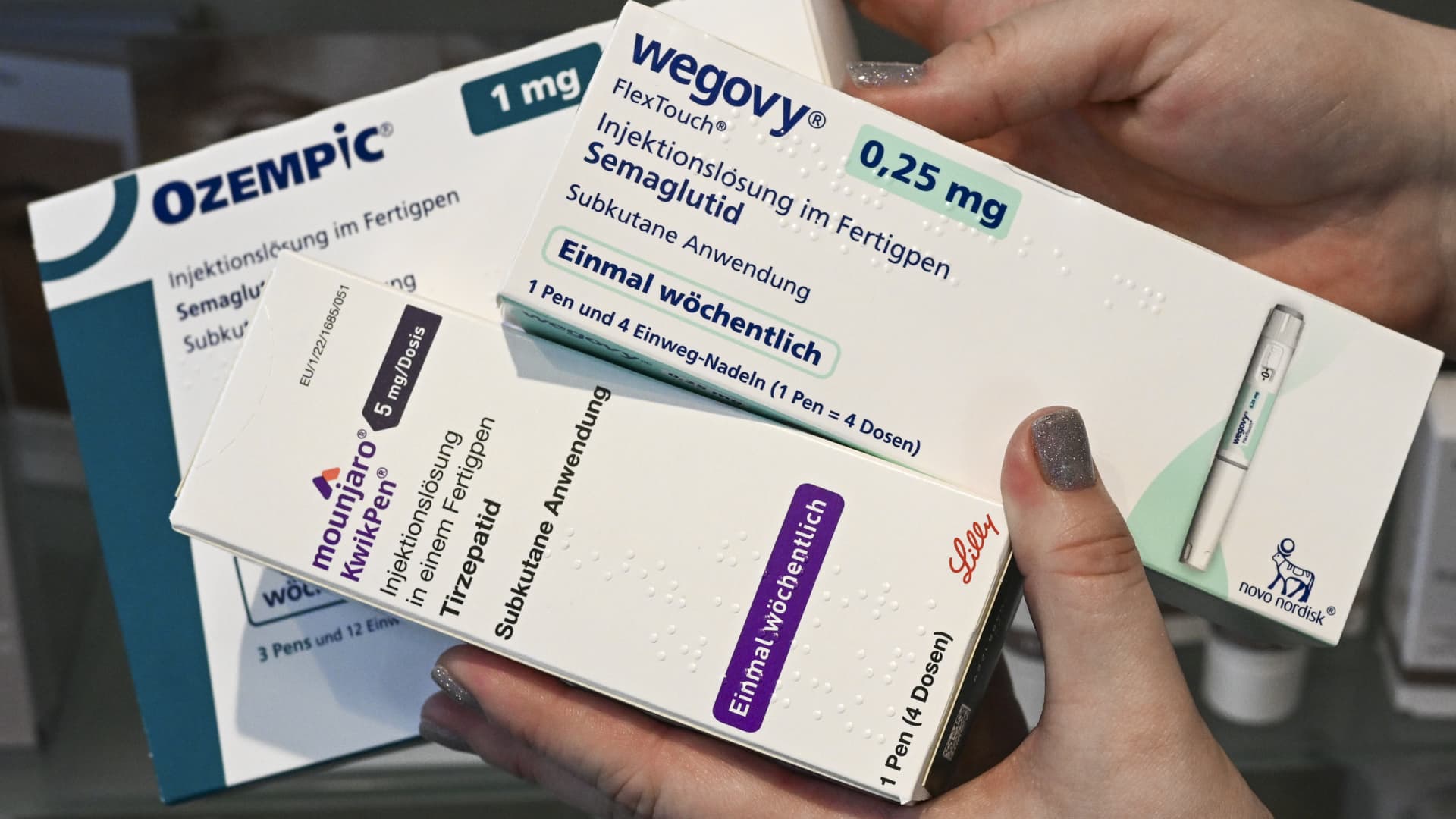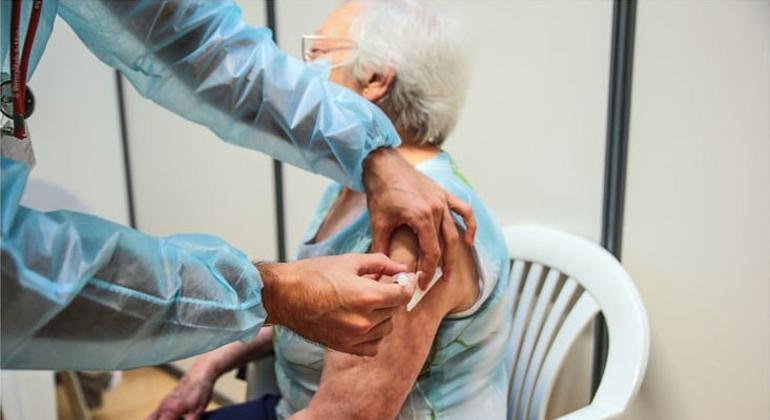The teams carrying out the high-risk missions witnessed intense hostilities in their surroundings, as well as large numbers of patients and overcrowding caused by people seeking shelter.
They also reported that food needs remain pressing throughout the enclave, which is impacting operations as hungry people stop convoys in the hope of finding something to eat.
WHO Director-General Tedros Adhanom Ghebreyesus issued a new call for the international community to “take urgent action to alleviate the grave danger facing the people of Gaza and which jeopardizes the ability of humanitarian workers to help people with terrible injuries, acute hunger and serious situations.” risk of illness”.
Hospitals that house thousands
Staff visited two hospitals on Tuesday: Al-Shifa in northern Gaza and Al-Amal Palestinian Red Crescent Society (PRCS) in the south.
Both hospitals also serve as shelters for people displaced by the ongoing conflict: 50,000 in Al-Shifa and 14,000 in Al-Amal.
In Al-Shifa, WHO delivered fuel to keep essential health services running. Staff also brought medical supplies, along with UNICEF, the United Nations children's agency. In support of NGO partner World Central Kitchen, WHO also provided materials that will support a kitchen at the hospital.
The Gaza Central Pharmacy also received medical supplies and will act as a delivery center to other hospitals.
Impact of the strikes
The teams that went to Al-Amal saw the consequences of the recent attacks that disabled the hospital's radio tower and impacted the central ambulance dispatch system for the entire Khan Younis area, affecting more than 1.5 million people . Only five of the nine ambulances the hospital once had are still operating.
WHO staff reported that it was impossible to enter the hospital without stepping over patients and people seeking shelter. Additionally, there are only a few functioning toilets in the hospital, adjacent community buildings and Palestinian Red Crescent training centres.
While transiting through Gaza, staff witnessed tens of thousands of people fleeing heavy attacks in Khan Younis and the Middle Area on foot, on donkeys or in cars. Makeshift shelters were being built along the road.
Overcrowding and fear of disease
The WHO feared that this new displacement would further strain health facilities in the south, which are already struggling to meet immense needs.
“This forced mass movement of people will also lead to increased overpopulation, increased risk of infectious diseases and will make the delivery of humanitarian aid even more difficult,” said Dr. Rik Peeperkorn, representative for the West Bank and Gaza.
The latest WHO assessments show that Gaza currently has 13 partially functioning and two minimally functioning hospitals, while 21 are not functioning at all.
The facilities include the Nasser Medical Complex, the largest referral hospital in southern Gaza, which is partially operational, and recent reports of evacuation orders for nearby residential areas are extremely worrying.
Staff also reported that the need for food remains acute throughout Gaza. Hungry people have been stopping convoys in search of food.
The WHO said its ability to supply medicines, medical supplies and fuel to hospitals is increasingly limited by the hunger and desperation of people both on the way to and inside hospitals.
A ceasefire is needed now
Tedros emphasized that the safety of WHO staff and the continuity of operations depend on more food reaching all of Gaza immediately.
His colleagues are also directly and personally affected by the conflict, like virtually everyone in Gaza, and he continues to receive heartbreaking news of loss.
“The recent United Nations Security Council resolution seemed to offer hope for an improvement in the distribution of humanitarian aid within Gaza,” he added.
“However, according to the accounts of WHO eyewitnesses on the ground, the resolution has not yet had a tragic impact. What we urgently need, right now, is a ceasefire to prevent civilians from suffering further violence and begin the long road to reconstruction and peace.”












